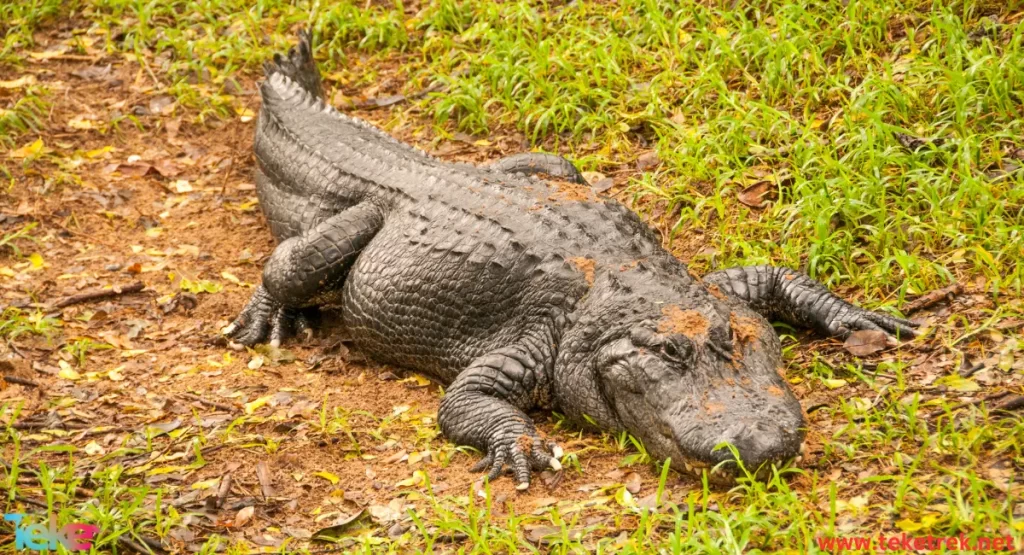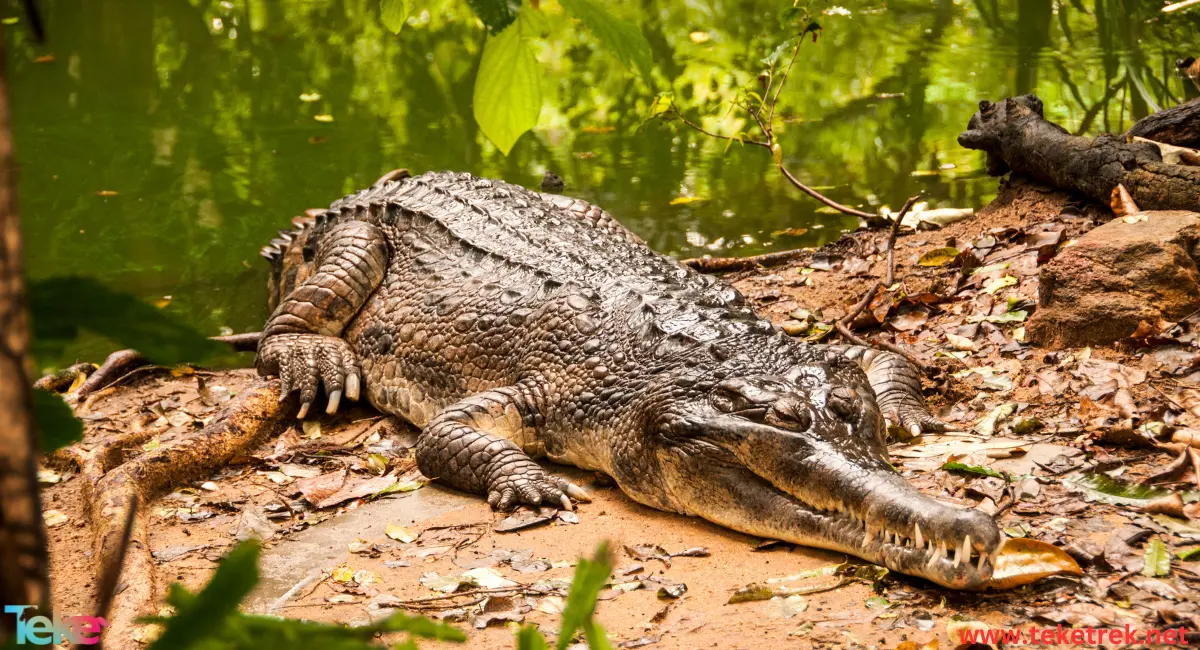The Orinoco crocodile is one of the unique wild creatures that lives in South America, specifically in the Orinoco River area, which is considered among the largest rivers in the region.
The Orinoco crocodile is considered an endangered species, as a result of many factors affecting its natural environment. In this article from teke trek, we will explore more information about this wonderful creature and the importance of protecting it.

An introduction to the Orinoco crocodile
The Orinoco crocodile, scientific name (Crocodylus intermedius), in English (Orinoco crocodile), is a type of reptile belonging to the genus Alligator in the crocodile family.
The Orinoco River region is a prime habitat for the Orinoco crocodile.
The Orinoco crocodile is distinguished by its huge size and ability to adapt to its aquatic environment.
The Orinoco crocodile is an essential part of the region’s ecosystem, playing an important role in balancing the ecosystem and preserving biodiversity.
As the threats facing the Orinoco crocodile increase, it is necessary to take immediate action to protect this magnificent creature and preserve its natural habitat, by raising awareness of the importance of crocodile conservation and providing support to conservation programs.
Everyone can contribute to saving the Orinoco crocodile and ensuring its continued existence in our natural world.
Scientific classification of the Orinoco crocodile:
Division: Olfactories
Subphylum: vertebrates
Subphylum: Tetrapods
Architecture: tetrapods
Class: Reptiles
Order: Crocodilians
Clade: long-nosed
Superfamily: Crocodileformes
Species: crocodile
Crocodile (genus)
Locations of the Orinoco crocodile
The Orinoco crocodile lives in the Orinoco River, which runs through several countries in South America, including Venezuela, Colombia, and Brazil.
This river is considered a major habitat for Orinoco crocodiles, and provides them with an ideal aquatic environment to live and reproduce.
The wet areas adjacent to the Orinoco River are also home to these crocodiles, where they find suitable conditions for survival and feeding.
What is the diet of the Orinoco crocodile?
The Orinoco crocodile is a carnivore, and feeds on a variety of animals and fish that live in the waters of the Orinoco River.
Its potential prey includes fish, birds, reptiles, small mammals, and even other animals such as turtles.
Orinoco crocodiles rely on their strong sense of smell, which helps them discover their prey in the water. They use their strong jaws and sharp teeth to grab and tear apart the prey.
Orinoco crocodiles are at the top of the food chain in the region, and play an important role in regulating the balance in their natural ecosystem.
Reproduction stages of the Orinoco crocodile
The Orinoco crocodile reproduces by internal pollination.
The mating process begins in the mating season, which usually occurs in late spring and early summer.
The male makes special sounds and displays special behaviors to attract females.
When the female finds a suitable male, she mates with him in the water.
After that, she lays between 20 and 40 eggs in a nest made of aquatic plants and mud on the banks of the river, where the female protects the eggs and the nest from predators, and provides the heat and moisture necessary for the eggs to hatch.
After about 3 months, the eggs hatch and baby crocodiles appear. The female takes care of the young for a short period before leaving them to live her life on her own. It takes about 3-4 years for baby crocodiles to grow to a size where they can survive independently.
How dangerous are Orinoco crocodiles?
Orinoco crocodiles are a natural part of the ecosystem in the South American region, and play an important role in the balance of the ecosystem.
However, they can be dangerous to the environment and humans in some cases, especially if they are poached or their natural habitat is lost.
Orinoco crocodiles pose a danger to humans if exposed to them directly, especially if the crocodiles are large.
Orinoco crocodiles can attack humans if they feel threatened, or if they view humans as potential prey. In addition, human-crocodile clashes can occur when humans approach or interfere with crocodile habitats.
To maintain balance in the environment and reduce the danger of Orinoco crocodiles to humans, their wildlife must be respected and their natural habitat not interfered with. Local residents must also be educated on how to deal with crocodiles and avoid collisions with them.

FAQs about the Orinoco crocodile
How big do Orinoco crocodiles get؟
Adult crocodiles can reach 22 feet in length, although males are larger than females.
How many Orinoco crocodiles are left؟
There are about 150 Orinoco crocodiles left in the wild.
Which country has the most crocodiles?
Australia has a large number of crocodiles, reaching 100,000 crocodiles, and each crocodile can reach 6 meters in length.
In short, the Orinoco crocodile is an essential part of the ecosystem in the South American region, and plays an important role in maintaining environmental balance. Although the Orinoco crocodile may be dangerous to humans in some cases, this danger can be reduced by respecting its environment and educating people on how to handle it safely.
Preserving Orinoco crocodiles and their natural habitat benefits both the environment and humans, and is an essential part of ongoing efforts to preserve biodiversity and preserve the environment for future generations





